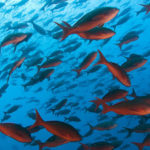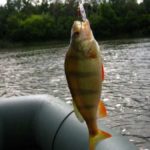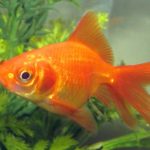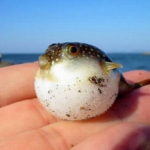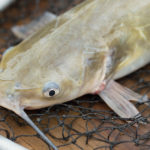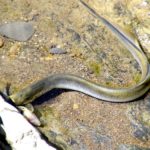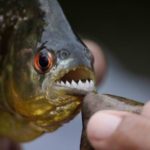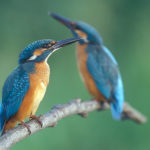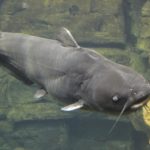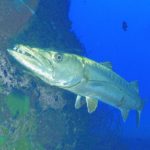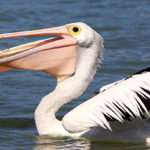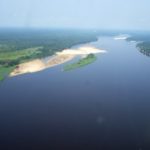Fishing carp
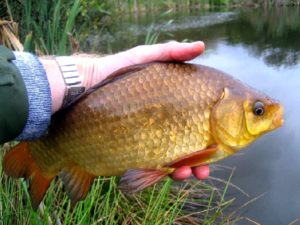 Crucian carp – one of the most capricious and unpredictable fish living in fresh water. Trying to find common rules for catching a crucian, you will most likely be doomed to failure. The question is “why?” – yes, it just makes no sense. Too many conflicting answers can be obtained on it.
Crucian carp – one of the most capricious and unpredictable fish living in fresh water. Trying to find common rules for catching a crucian, you will most likely be doomed to failure. The question is “why?” – yes, it just makes no sense. Too many conflicting answers can be obtained on it.
The most common answer is: “Because this fish is very easily and successfully integrated into any ecosystem and shows miracles of survival.”
A rather rare type of fish – the gold carp does not live everywhere or always. But the silver carp is a miracle of nature. It is easier to list the types of reservoirs where this fish is not found than to talk about places where it can be found.
The silver carp definitely does not like small, fast-flowing, cold rivers, but if there is at least one pit on such a river, where the river flow slows down and the water warms up, at least to +15 degrees, the chances of its survival increase dramatically.
He is an opportunist, in the best sense of the word. Ichthyologists argue that the entire population of goldfish inhabiting freshwaters is females. During spawning, their eggs are fertilized by other fish – carp, bream, carp, tench and roach. As a result, the carp becomes externally similar to those fish that have fertilized its eggs.
Even the size of the fish that fertilizes the roe affects the appearance of the crucian. As a result, on large lakes where venerable carp dwells, crucians grow to trophy sizes, and in small planters, where only a minnow survives or a small bleak, the standard crucian rarely grows larger than five centimeters.
If bream and carp living in different bodies of water often have similar habits, behavioral norms, tastes, it’s difficult to find common features in carpian behavior. That is why carp fishing is so interesting.
A crucian carp that lives in a large reservoir and a crucian carp inhabiting a small fire reservoir are two different fish.
The above is also true for crucians living in bays in large, medium and small rivers, in deep and not very open-cast mines, in ponds, reservoirs, wild lakes and abandoned peat mines, in drainage canals and sewage tanks.
There are single reservoirs without a current, in which the crucian carp definitely cannot survive:
1) Small lakes, which are periodically subjected to forays poachers using elektroudochki.
2) Lakes, where the dominant species is a predator. Rarely, but there are lakes where you can catch only perch or only pike.
3) Deep quarries with steep clay banks, where cold keys are beaten at the bottom.
But these reservoirs are not so much, especially on the East European Plain.
We repeat: “In almost any reservoir you can meet carp.” This spring fish on the river is kept relatively shallow areas of water bodies, with a weak current and heated by the sun water. The more underwater vegetation in this place, the better.
Along with the silver carp, which some scientists compare with the whale, the crucian got the unofficial nickname “underwater cow”. This fish is rather slow, it likes to eat well.
Because in the spring it is where you can find food – in the shallow areas warmed up by the sun. But in the summer – anywhere, but more often in places where there is food and protection. Most often, these are quiet, overgrown with reeds, sedges or water lilies river bays with depths of up to 2 meters. Extreme depths carp tries to avoid.
Closer to the autumn, the crucian carcass either returns to the areas warmed up by the Sun and prepares for freezing there, fattening fat, or searches for places where the thickness of silt allows it to bury itself completely and winters there.
Places on reservoirs, where cold keys are beating at the bottom, crucian tries to avoid. Only in the hottest months he can approach such sites, but for a long time he tries not to linger there.
In large reservoirs, crucian carp should be sought on the borders of vegetation and open water. In medium and shallow reservoirs, the crucian moves across the entire reservoir in flocks, preferring to keep on the leeward side – although this condition is not fundamental.
In the overgrown reservoirs carp can be found in the windows. In large quarries, he keeps the differences of depths. In small pits, the carp is cautious and rarely approaches the shores.
This is one of the most difficult questions, the answer, which can only be found directly on the pond. Because the tackle is the tool that has to be changed in order to meet the conditions of fishing on a particular reservoir.
For catching a crucian carp, they use both finishing and float tackle.
It is difficult to recommend something specific. If to approach the question from the practical side, then:
In the spring and autumn, when the crucian carp is kept along the coastal shallows, it is better to use the float rig with a light float in combination with a fly, plug or Bologna fishing rod.
In the summer, in those reservoirs where the crucian tries to keep to the coastal zone, it is also more convenient to catch it with the help of a float fishing rod – flywheel or bologna.










